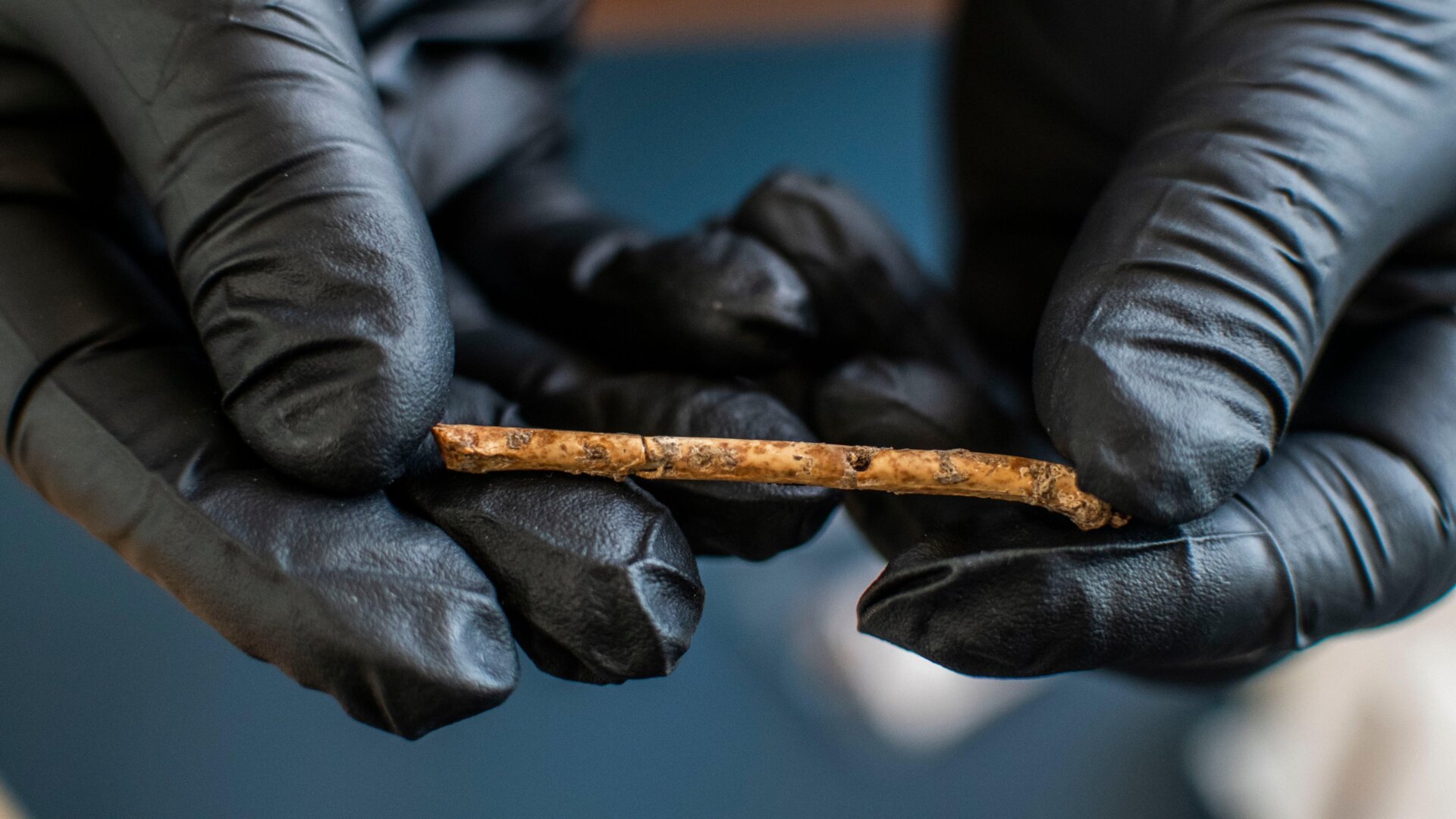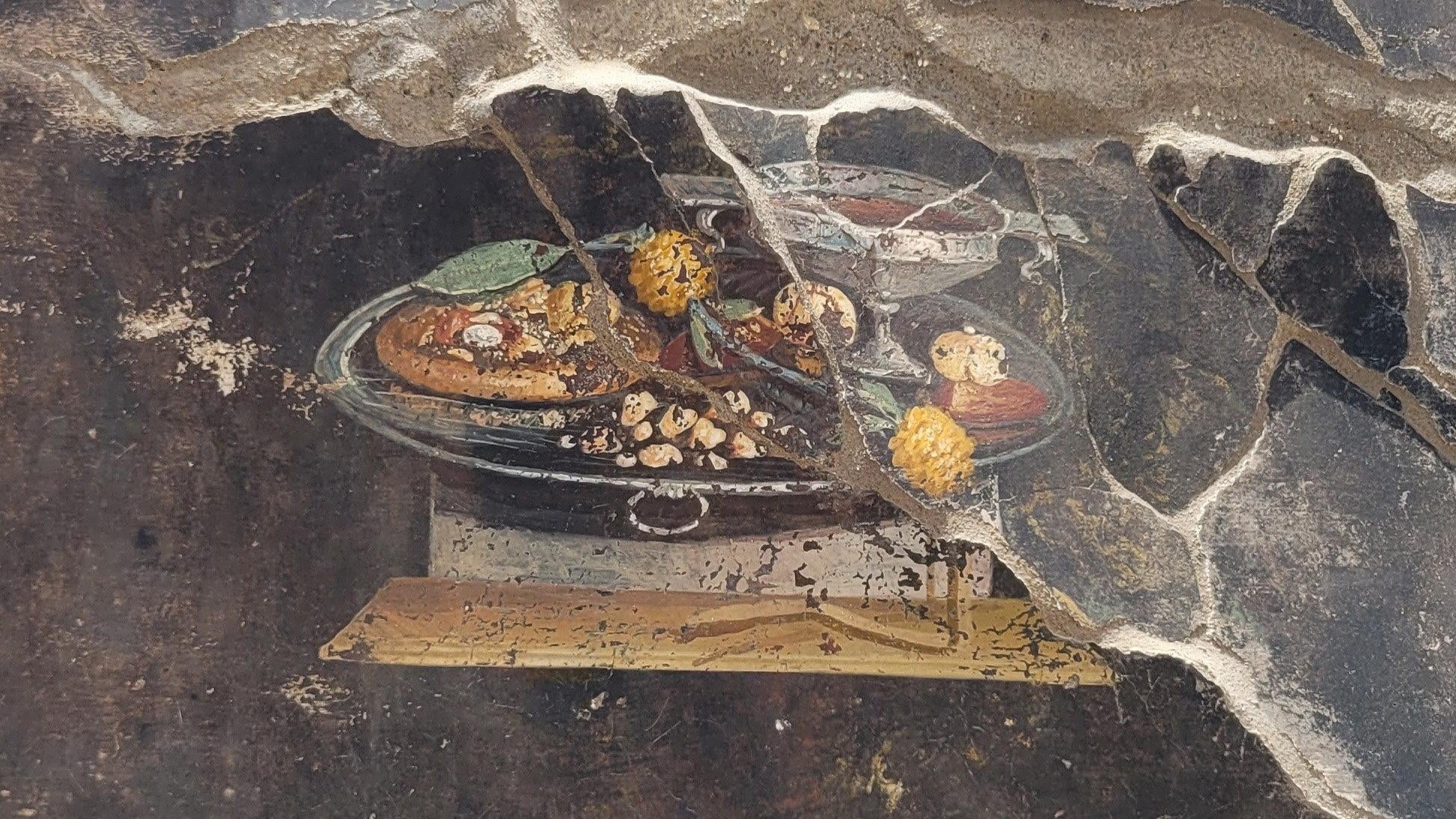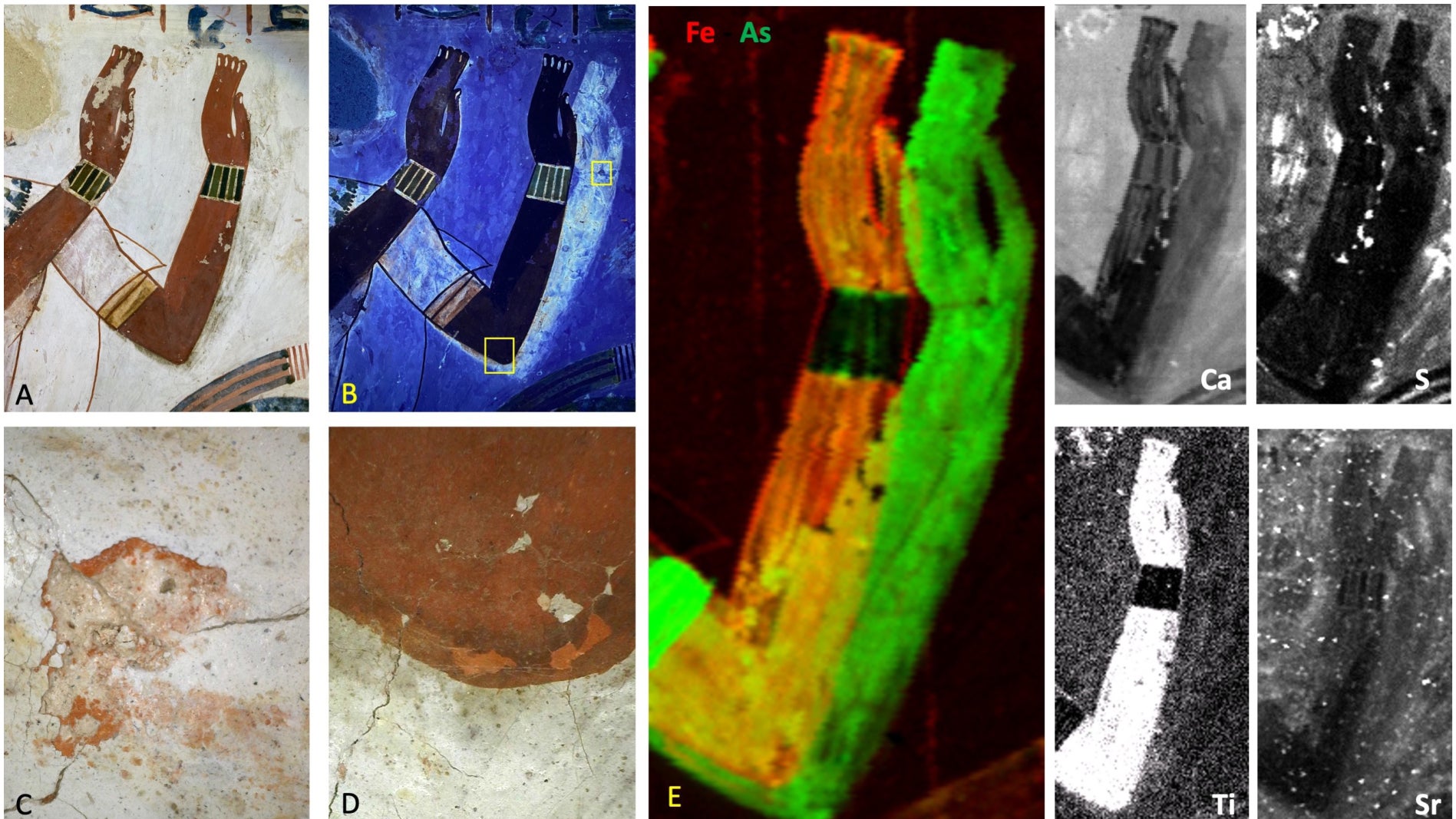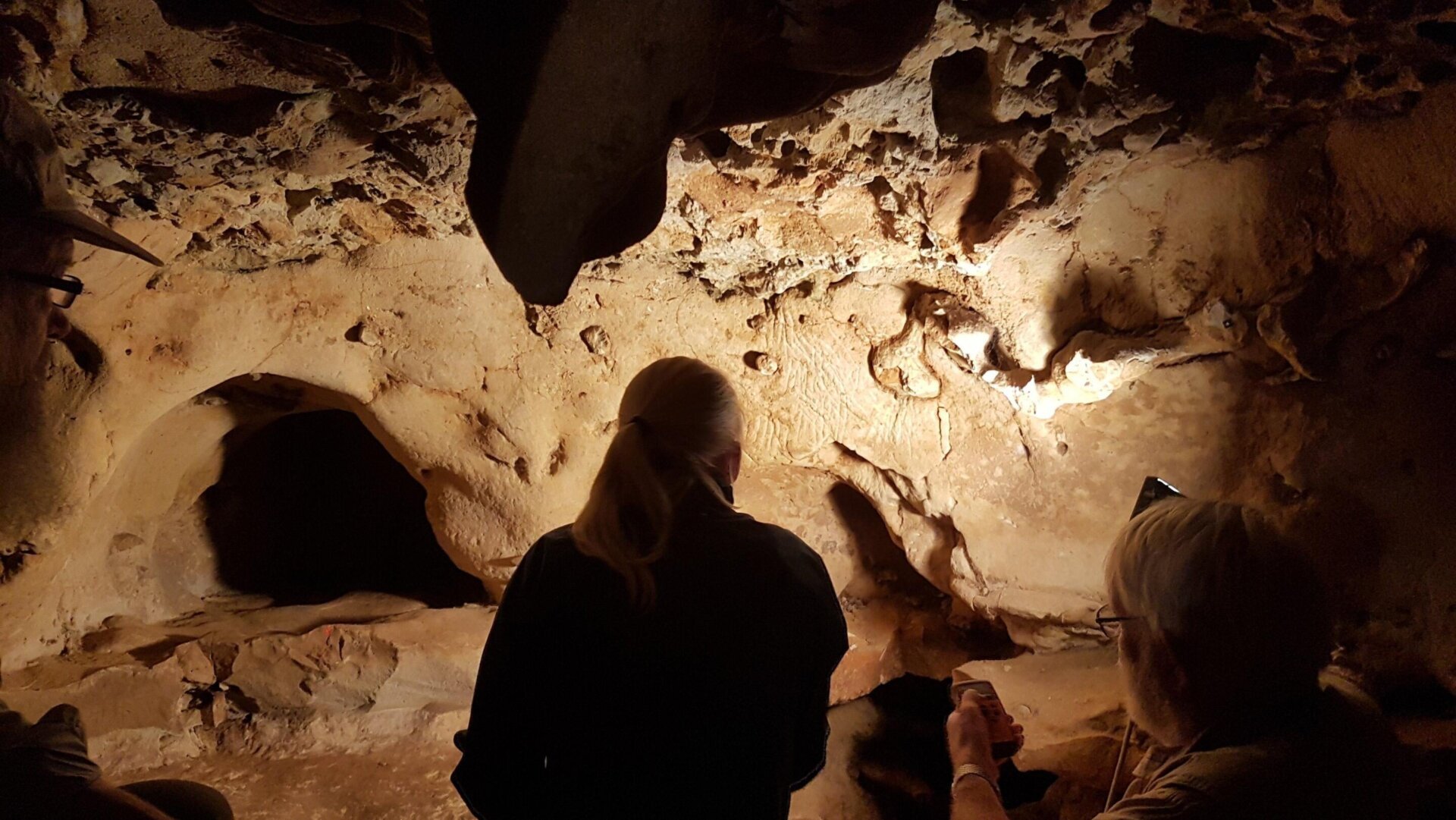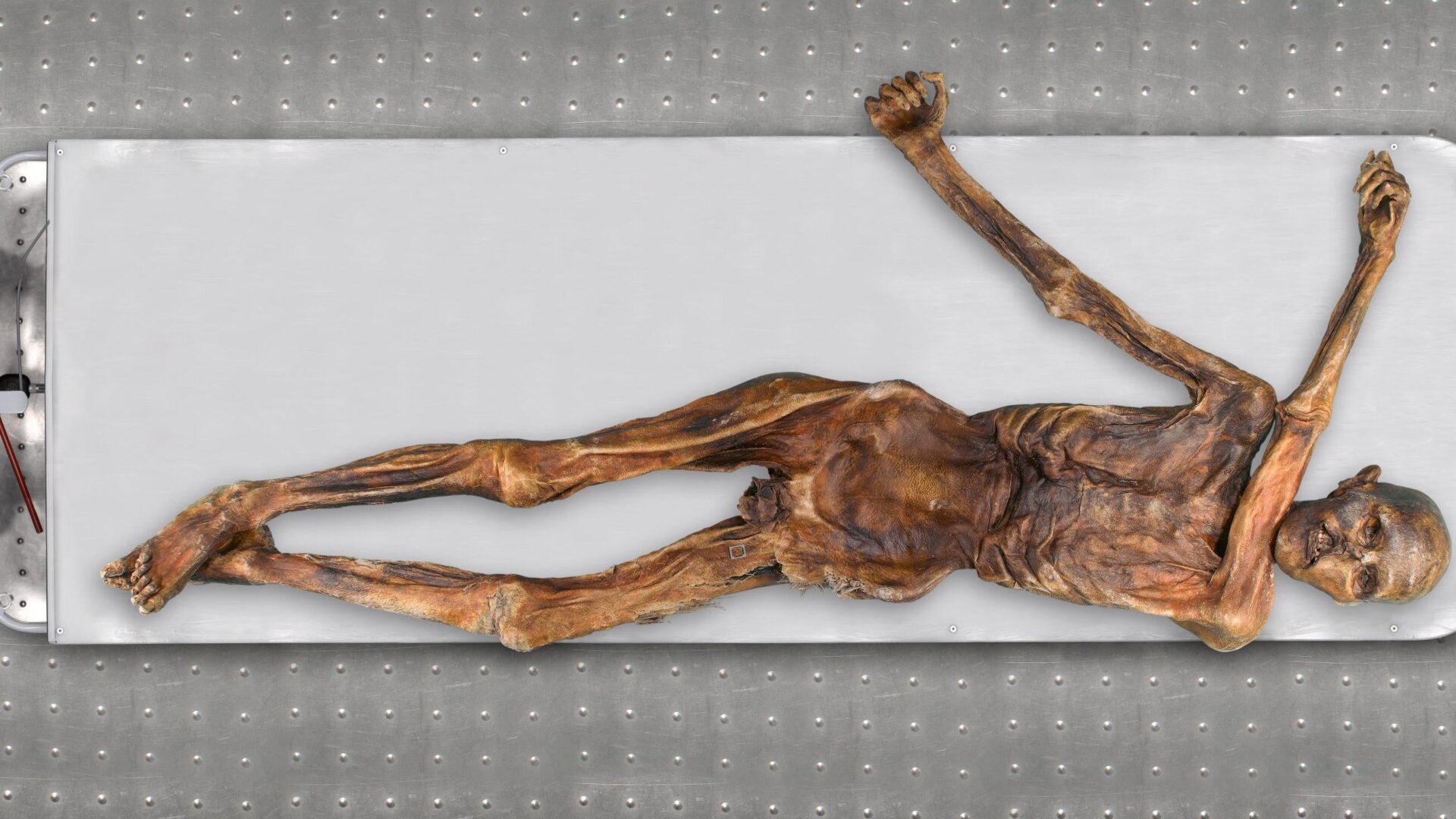Prehistoric humans may have crafted bird bones into flutes to lure their feathered prey to their demise, according to a recent archaeological study. These remarkable artifacts, dating back 12,000 years, were unearthed in Israel’s Hula Valley, a region west of the Golan Heights. Initially excavated in 1955, the bones recently underwent a thorough re-examination, revealing their potential significance.
Seven wing bones of coots and teals were discovered at the site. Upon closer inspection, archaeologists identified tiny, deliberately bored holes along the sides of the bones, suggesting their use as aerophones—ancient wind instruments. The researchers hypothesize that these bone flutes were used to mimic the calls of birds of prey, startling migratory birds into flight and making them easier targets for Natufian hunters. The team’s findings were published in Scientific Reports.
 A researcher blowing one of the replica bones.A researcher plays a replica bird bone flute, demonstrating how these ancient instruments might have sounded. Photo: Laurent David
A researcher blowing one of the replica bones.A researcher plays a replica bird bone flute, demonstrating how these ancient instruments might have sounded. Photo: Laurent David
Could These Be the First Hunting Flutes?
“If these flutes were indeed used for hunting, this discovery represents the earliest known evidence of using sound in hunting practices,” explained Hamudi Khalaily, an archaeologist at the Israel Antiquities Authority and co-author of the study. This discovery adds a new dimension to our understanding of prehistoric hunting techniques, complementing the existing archaeological record of tools from the early transition to agriculture and animal domestication in the southern Levant.
Replicating Ancient Sounds
To test their hypothesis, the team created replica flutes from mallard bones, carefully matching the size and hole placement of the original artifacts (only one of which was intact). By blowing through these replicas, the researchers were able to produce high-pitched sounds that closely resembled the calls of two birds of prey known to inhabit the Neolithic Levant: the Common kestrel (Falco tinnunculus) and the sparrowhawk (Accipiter nisus).
Uncertainties and Alternative Interpretations
The team acknowledges the inherent challenges in interpreting archaeological finds. Distinguishing an artifact’s potential to produce sound from confirming its intended purpose is a fundamental problem. Even if the bones were crafted to create sound, their use in hunting remains speculative. They might have been among the earliest musical instruments, a field where archaeological evidence is often scarce.
The Importance of Preservation
“This research underscores the crucial role of preserving cultural artifacts,” stated Rivka Rabinovich, an archaeologist at the Hebrew University of Jerusalem and a co-author of the study. “These artifacts can continue to reveal new insights into human culture, thanks to advancements in research methods and interdisciplinary collaboration.” Just as NASA’s preserved lunar samples from the Apollo missions continue to provide valuable data, archaeological finds can only increase in value over time.
Looking Ahead
Future discoveries may shed more light on ancient sound-making tools and their archaeological context. Advances in analytical techniques, combined with new archaeological finds, promise a richer understanding of our sonorous past. More: What Was the Earliest Music?



